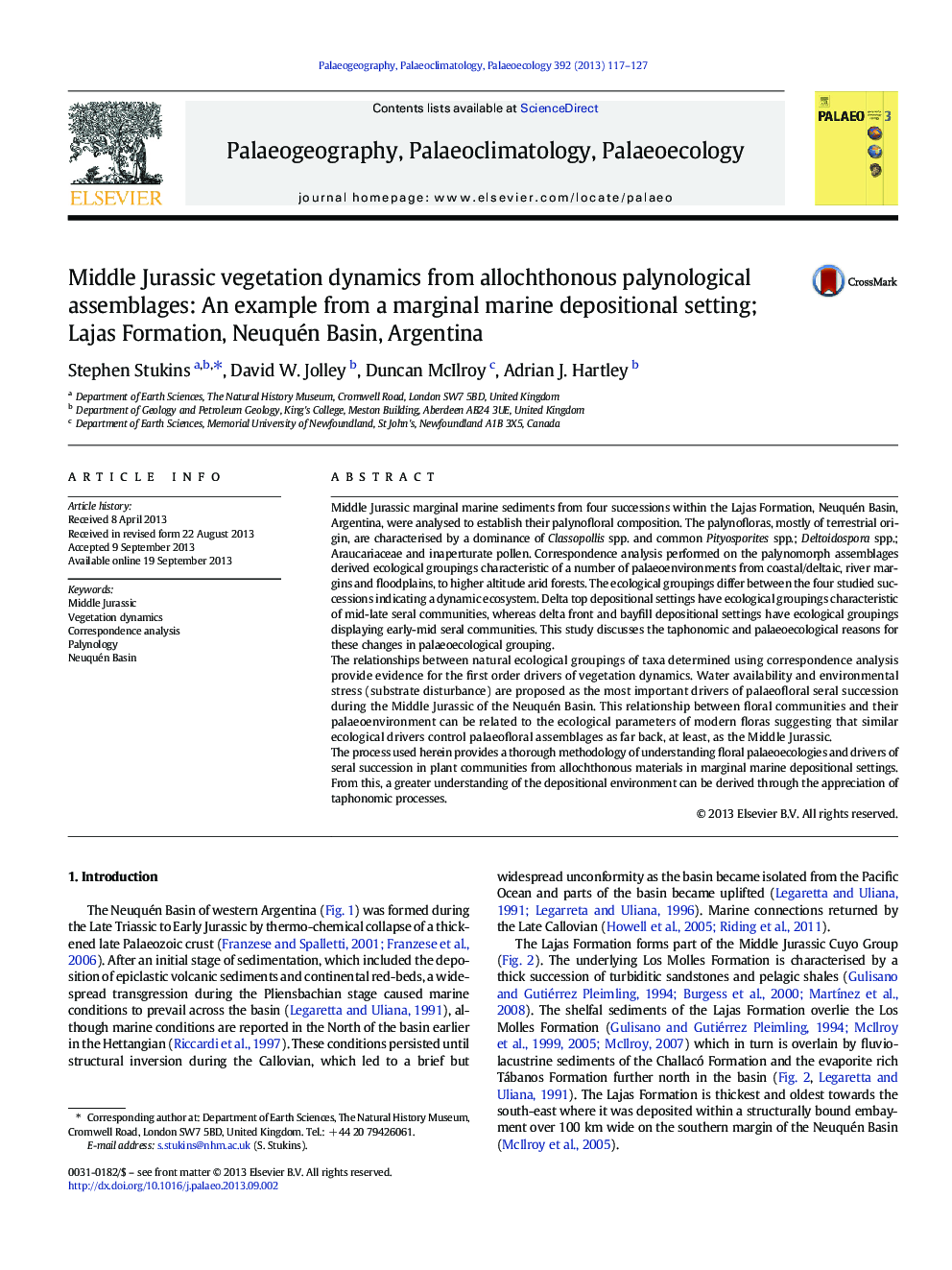| کد مقاله | کد نشریه | سال انتشار | مقاله انگلیسی | نسخه تمام متن |
|---|---|---|---|---|
| 4466433 | 1622198 | 2013 | 11 صفحه PDF | دانلود رایگان |

• Palynomorphs were studied from the marginal marine deposits of the Lajas Formation.
• A dynamic palaeofloral ecosystem is presented using correspondence analysis.
• Drivers for palaeofloral dynamics are proposed from the statistical analysis.
• Changes in assemblage are discussed in terms of taphonomy and palaeoecology.
Middle Jurassic marginal marine sediments from four successions within the Lajas Formation, Neuquén Basin, Argentina, were analysed to establish their palynofloral composition. The palynofloras, mostly of terrestrial origin, are characterised by a dominance of Classopollis spp. and common Pityosporites spp.; Deltoidospora spp.; Araucariaceae and inaperturate pollen. Correspondence analysis performed on the palynomorph assemblages derived ecological groupings characteristic of a number of palaeoenvironments from coastal/deltaic, river margins and floodplains, to higher altitude arid forests. The ecological groupings differ between the four studied successions indicating a dynamic ecosystem. Delta top depositional settings have ecological groupings characteristic of mid-late seral communities, whereas delta front and bayfill depositional settings have ecological groupings displaying early-mid seral communities. This study discusses the taphonomic and palaeoecological reasons for these changes in palaeoecological grouping.The relationships between natural ecological groupings of taxa determined using correspondence analysis provide evidence for the first order drivers of vegetation dynamics. Water availability and environmental stress (substrate disturbance) are proposed as the most important drivers of palaeofloral seral succession during the Middle Jurassic of the Neuquén Basin. This relationship between floral communities and their palaeoenvironment can be related to the ecological parameters of modern floras suggesting that similar ecological drivers control palaeofloral assemblages as far back, at least, as the Middle Jurassic.The process used herein provides a thorough methodology of understanding floral palaeoecologies and drivers of seral succession in plant communities from allochthonous materials in marginal marine depositional settings. From this, a greater understanding of the depositional environment can be derived through the appreciation of taphonomic processes.
Journal: Palaeogeography, Palaeoclimatology, Palaeoecology - Volume 392, 15 December 2013, Pages 117–127